Pauline's Passion And Punishment
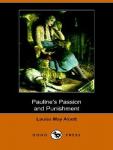
Her eyes came back from their long gaze and settled on him full of an intelligence which deepened his perplexity. "You have not learned to know me yet; death is not more inexorable or time more tireless than I. This week has seemed one of indolent delight to you. To me it has been one of constant vigilance and labor, for scarcely a look, act, or word of mine has been without effect.
Related Books
-
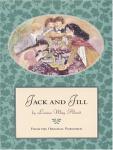 Jack And JillLouisa May Alcott
Jack And JillLouisa May Alcott -
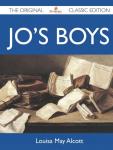 Jo's BoysLouisa May Alcott
Jo's BoysLouisa May Alcott -
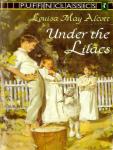 Under The LilacsLouisa May Alcott
Under The LilacsLouisa May Alcott -
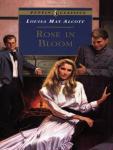 Rose In BloomLouisa May Alcott
Rose In BloomLouisa May Alcott -
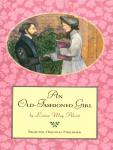 An Old-Fashioned GirlLouisa May Alcott
An Old-Fashioned GirlLouisa May Alcott -
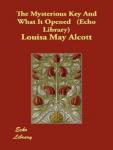 The Mysterious Key And What It OpenedLouisa May Alcott
The Mysterious Key And What It OpenedLouisa May Alcott -
 Little WomenLouisa May Alcott
Little WomenLouisa May Alcott -
 Pauline's Passion And PunishmentLouisa May Alcott
Pauline's Passion And PunishmentLouisa May Alcott
Author other works
-

Pauline's Passion And Punishment
Louisa May Alcott
Her eyes came back from their long gaze and settled on him full of an intelligence which deepened his perplexity. "You have not learned to know me yet; death is not more inexorable or time more tireless than I. This week has seemed one of indolent delight to you. To me it has been one of constant vigilance and labor, for scarcely a look, act, or word of mine has been without effect.
-
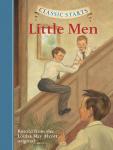
Little Men
Louisa May Alcott
Little Men, or Life at Plumfield with Jo's Boys is a novel by American author Louisa May Alcott, first published in 1871. The novel reprises characters from Little Women and is considered by some the second book of an unofficial Little Women trilogy, which is completed with Alcott's 1886 novel Jo's Boys, and How They Turned Out: A Sequel to "Little Men". Little Men tells the story of Jo Bhaer and the children at Plumfield Estate School. The book was inspired by the death of Alcott's brother-in-law, which reveals itself in one of the last chapters, when a beloved character from Little Women passes away. The novel has been adapted to a 1934 film, a 1940 film, a television series, and a Japanese animated television series.Little Men recounts six months in the life of the students at Plumfield, a school run by Professor Friedrich and Mrs. Josephine Bhaer. The idea of the school is first suggested at the very end of part two of "Little Women", when Jo inherited the estate from her Aunt March.The story begins with the arrival of Nat Blake, a shy young orphan who used to earn a living playing the violin. We are introduced to the majority of the characters through his eyes. There are ten boys at the school already; Nat, and later his friend Dan, join them, and soon after Nan arrives as companion for Daisy, the only girl. Jo's sons Rob and Teddy are younger than the others and are not counted among the pupils, nor are the two girls, Daisy and Nan.The school is not run on conventional lines. All the children have their own gardens and their own pets, and are encouraged to experiment with running businesses. Pillow fights are permitted on Saturdays, subject to a time limit. Children are treated as individuals, with a strong emphasis on gently moulding their characters.Daisy Brooke (Meg's daughter), is at the school with her twin brother Demi, but is somewhat isolated with no other girls her age, until Nan's arrival. Nan is even more of a tomboy than Jo was as a child, while Daisy is interested mainly in dolls and in her own mini kitchen, which purchased by Jo's brother-in-law, Laurie.The other new student, Dan, is introduced by Nat. Dan originally decides the other boys are "molly-coddles" and leads them in experiments with fighting, drinking, smoking, swearing and playing cards, which results in his being temporarily removed from the school. He returns eventually with an injured foot, and redeems himself by standing up for Nat when Nat is falsely accused of theft by the other boys. He also becomes curator of the school's natural history museum.Personal relationships are central to the school, and diversity is celebrated. Daisy is deeply attached to her twin brother, to shy Nat, and to tomboy Nan. Nan and Tommy are also close and intend to marry when they grow up. Dan, already friends with Nat, is unexpectedly drawn to the pious Demi and the toddler Teddy. While Franz, Emil, Daisy and Demi are all related to the Bhaers, they are not treated with favouritism and are encouraged to overcome their faults just the same as the other pupils.
-

Jo's Boys
Louisa May Alcott
This is a story of how the Little Men turned out. Will Tom be able to get Nan to marry him? Or will Nan turn him down? What about Dan? Does he ever marry? And what about the Princess? Will Mrs. Meg Brooke ever let Nat marry Daisy? Read the book to find out the rest of the story! For Jos Boys, which she intended to be the last in her series about the March family, Louisa May Alcott pulled out all the stops. It is with great fanfare that the beloved characters of former books make their last appearance. All sorts of incredible developments are described in the course of the novel-and some of them fairly stretch the imagination. My favorite is the emigration of the whole extended family to Plumfield: Meg has a house close by, Laurie and Amy have a mansion on an adjacent hill, and even Mr. March and Mr. Laurence have become neighbors to the school. Of course, this and all the rest make the story more fun. The school itself has become a college-a convenient twist that allows the characters from Little Men to still be in the same area years after they ought to have moved away. Though not all the Plumfield students make a second appearance, Alcotts famous favorites remain. A decade later, Demi is having trouble deciding on a career and declaring himself to a certain young lady. Tommy is in pursuit of his childhood sweetheart, Nan, who has vowed to be a spinster for life. Nat is sent to Germany, far away from his beloved Daisy, for musical training. Emil is shipwrecked, Dan tangles with the law, and young Ted gets into scrapes worthy of his namesakes youth. There is enough lovering and spooning here to make up for the lack in Little Men, but some characters brought in for the romance are ex machina. I loved this book, but I thought that little men and little Woman were better. Perhaps it is the long times span she took writing it.
-

Little Women
Louisa May Alcott
Little Women is a novel by American author Louisa May Alcott (1832–1888). The book was written and set in the Alcott family home, Orchard House, in Concord, Massachusetts. It was published in two volumes in 1868 and 1869. The novel follows the lives of four sisters – Meg, Jo, Beth, and Amy March – and is loosely based on the author's childhood experiences with her three sisters. The first volume, Little Women, was an immediate commercial and critical success, prompting the composition of the book's second volume, entitled Good Wives, which was also successful. Both books were first published as a single volume entitled Little Women in 1880. Alcott followed Little Women with two sequels, also featuring the March sisters: Little Men (1871) and Jo's Boys (1886). Little Women was a fiction novel for girls that veered from the normal writings for children, especially girls, at the time. Little Women has three major themes:" domesticity, work, and true love. All of them are interdependent and each is necessary to the achievement of a heroine’s individual identity."Little Women itself "has been read as a romance or as a quest, or both. It has been read as a family drama that validates virtue over wealth." Little Women has been read "as a means of escaping that life by women who knew its gender constraints only too well." Alcott "combines many conventions of the sentimental novel with crucial ingredients of Romantic children's fiction, creating a new form of which Little Women is a unique model." Elbert argued that within Little Women can be found the first vision of the "American Girl" and that her multiple aspects are embodied in the differing March sisters.
-

Jack And Jill
Louisa May Alcott
When best friends, Jack and Jill, tumble off their sled, their injuries cause them to be bedridden for many months. Their parents fill their days with the joys of Christmas preparations, a theatrical production and many other imaginative events.